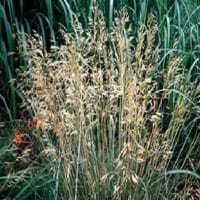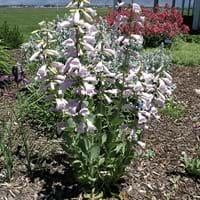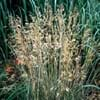Life Span
Annual
Perennial
Type
Grass
Flowering Plants
Origin
Southern Europe, Western Europe, Northern Africa
North-Central United States, Central United States, Western United States, Texas
Types
Avena sativa, Hull-less Oat, Avena barbata
Not Available
Number of Varieties
Not Available
Habitat
Banks, meadows, Rocky Ridges
Cultivated Beds, Sandy areas, Sunny Edge
USDA Hardiness Zone
5-9
3-9
Sunset Zone
4, 5, 6, 7, 8, 9, 14, 15, 16, 17, 18, 20, 21, 22, 23, 24
1a, 1b, 2a, 2b, 3a, 3b, 10
Habit
Clump-Forming
Upright/Erect
Flower Color
Light Yellow, White
White
Flower Color Modifier
Bicolor
Bicolor
Fruit Color
Not Applicable
Not Available
Leaf Color in Spring
Green
Light Green, Gray Green
Leaf Color in Summer
Light Green
Gray Green
Leaf Color in Fall
Blue Green, Dark Green
Gray Green
Leaf Color in Winter
Gold, Tan, Ivory
Not Available
Leaf Shape
Linear
Oval to egg shaped
Plant Season
Summer, Fall, Winter
Summer
Sunlight
Full Sun, Partial Sun
Full Sun, Partial Sun
Type of Soil
Clay, Loam
Clay, Loam
The pH of Soil
Acidic, Neutral, Alkaline
Neutral, Alkaline
Soil Drainage
Well drained
Well drained
Bloom Time
Summer
Late Spring, Early Summer, Summer
Tolerances
Drought
Drought
Where to Plant?
Ground
Container, Ground, Pot
How to Plant?
Divison, Spores
Cuttings, Divison, Seedlings
Plant Maintenance
Low
Medium
Watering Requirements
Needs less watering
Keep the Soil well drained, Needs a lot of moisture in the growing season, Reduce watering in winter
In Summer
Lots of watering
Lots of watering
In Spring
Moderate
Moderate
In Winter
Average Water
Average Water
Soil pH
Acidic, Neutral, Alkaline
Neutral, Alkaline
Soil Type
Clay, Loam
Clay, Loam
Soil Drainage Capacity
Well drained
Well drained
Sun Exposure
Full Sun, Partial Sun
Full Sun, Partial Sun
Pruning
Remove damaged leaves, Remove dead branches, Remove dead leaves
Remove damaged leaves, Remove dead branches, Remove dead leaves
Fertilizers
All-Purpose Liquid Fertilizer
All-Purpose Liquid Fertilizer
Pests and Diseases
Bacteria wilt
Red blotch
Plant Tolerance
Drought
Drought
Flowers
Insignificant
Showy
Flower Petal Number
Single
Single
Edible Fruit
Not Available
No
Showy Foliage
Not Available
Yes
Foliage Texture
Fine
Medium
Foliage Sheen
Glossy
Matte
Attracts
Bees, Leaf Hoppers
Birds, Bumblebees
Allergy
allergic conjunctivitis, Hay fever, sneezing
no allergic reactions
Aesthetic Uses
Ground Cover, Landscape Designing
Showy Purposes
Beauty Benefits
Not Available
Not Available
Environmental Uses
Air purification
Air purification
Medicinal Uses
Antispasmodic, Emmoiliant, Nervine
Analgesic, Febrifuge, Stomachic
Part of Plant Used
Whole plant
Root
Other Uses
Can be made into a herbal tea, Cosmetics, Use in Chinese herbology, Used as Ornamental plant
Chewing
Used As Indoor Plant
No
No
Used As Outdoor Plant
Yes
Yes
Garden Design
Dried Flower/Everlasting, Foundation, Mixed Border
Rock Garden / Wall, Wildflower
Botanical Name
STIPA gigantea
PENSTEMON grandiflorus 'Prairie Snow'
Common Name
Giant Feather Grass, Golden Oats
Large Beardtongue, Prairie Snow Beardtongue
In Hindi
स्वर्ण जई
Large Beardtongue
In German
Haferpflanze
Large Beardtongue
In French
Plantes d'avoine
Large Beardtongue
In Spanish
planta de avena
Large Beardtongue
In Greek
φυτό βρώμη
Large Beardtongue
In Portuguese
aveia planta
Large Beardtongue
In Polish
Owies roślin
Large Beardtongue
In Latin
Oat plant
Large Beardtongue
Phylum
Tracheophyta
Magnoliophyta
Class
Liliopsida
Magnoliopsida
Order
Poales
Scrophulariales
Family
Poaceae
Scrophulariaceae
Clade
Angiosperms, Commelinids, Monocots
Angiosperms, Asterids, Eudicots
Tribe
Aveneae
Not Available
Subfamily
Pooideae
Not Available
Number of Species
Not Available
Not Available
Properties of Golden Oats and Large Beardtongue
Wondering what are the properties of Golden Oats and Large Beardtongue? We provide you with everything About Golden Oats and Large Beardtongue. Golden Oats doesn't have thorns and Large Beardtongue doesn't have thorns. Also Golden Oats does not have fragrant flowers. Golden Oats has allergic reactions like allergic conjunctivitis, Hay fever and sneezing and Large Beardtongue has allergic reactions like allergic conjunctivitis, Hay fever and sneezing. Compare all the properties and characteristics of these two plants. Find out which of these plant can be used as indoor plant. If you are interested to decorate your house and garden, find out aesthetic uses, compare them and select the plant which will beautify your surrounding. Along with beautification, try comparing medicinal and edible uses of Golden Oats and Large Beardtongue and you can choose the plant having best and most benefits.
Season and Care of Golden Oats and Large Beardtongue
Season and care of Golden Oats and Large Beardtongue is important to know. While considering everything about Golden Oats and Large Beardtongue Care, growing season is an essential factor. Golden Oats season is Summer, Fall and Winter and Large Beardtongue season is Summer, Fall and Winter. The type of soil for Golden Oats is Clay, Loam and for Large Beardtongue is Clay, Loam while the PH of soil for Golden Oats is Acidic, Neutral, Alkaline and for Large Beardtongue is Neutral, Alkaline.
Golden Oats and Large Beardtongue Physical Information
Golden Oats and Large Beardtongue physical information is very important for comparison. Golden Oats height is 180.00 cm and width 120.00 cm whereas Large Beardtongue height is 50.80 cm and width 35.60 cm. The color specification of Golden Oats and Large Beardtongue are as follows:
Golden Oats flower color: Light Yellow and White
Golden Oats leaf color: Green
Large Beardtongue flower color: White
- Large Beardtongue leaf color: Light Green and Gray Green
Care of Golden Oats and Large Beardtongue
Care of Golden Oats and Large Beardtongue include pruning, fertilizers, watering etc. Golden Oats pruning is done Remove damaged leaves, Remove dead branches and Remove dead leaves and Large Beardtongue pruning is done Remove damaged leaves, Remove dead branches and Remove dead leaves. In summer Golden Oats needs Lots of watering and in winter, it needs Average Water. Whereas, in summer Large Beardtongue needs Lots of watering and in winter, it needs Average Water.




